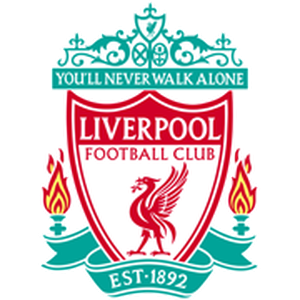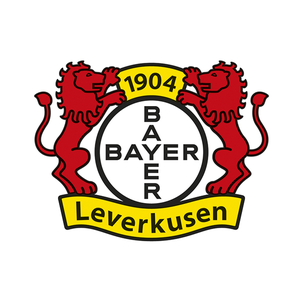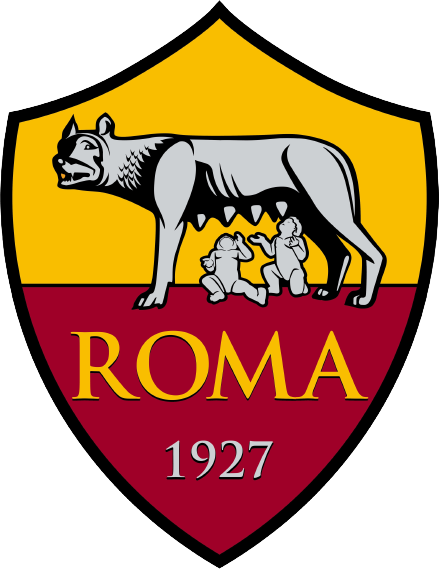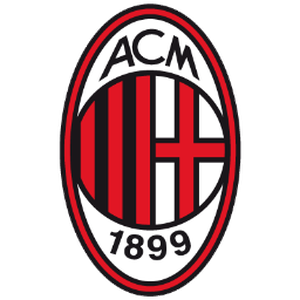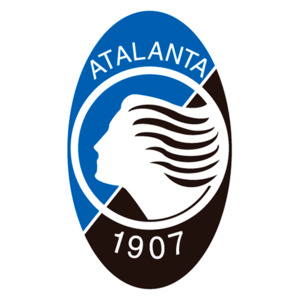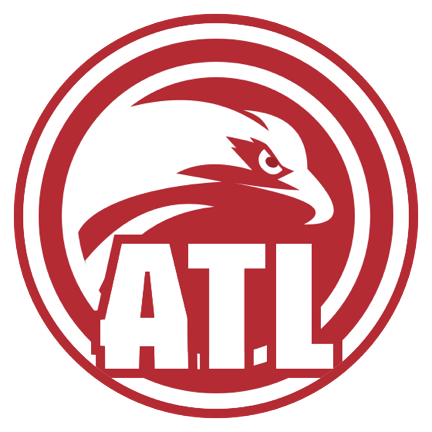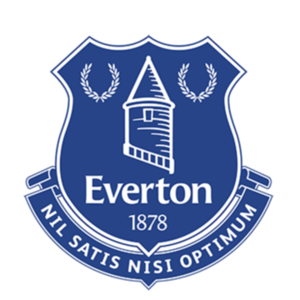
立即预约明日直播:

作者:宠物医师网编委会
点击阅读作者更多临床文献
在宠物医疗里,心脏疾病精准诊断关乎宠物健康。超声心动图作为诊断猫类心脏疾病的“利器”,能全面评估心脏功能,为治疗提供关键依据。
心肌病是猫常见心脏疾病,肥厚型心肌病尤为高发。其中,波斯猫是心肌病易发品种!
摘要
准确运用超声心动图评估心脏功能并作出诊断,需掌握正常超声心动图指标。本研究对 76 只健康成年波斯猫进行了未使用镇静剂的二维超声心动图和 M 模式心动图检查,并对 16 个超声心动图指标在雄性和雌性猫间展开比较。结果显示,雌性和雄性波斯猫左心室舒张末期游离壁厚度存在显著差异(雌性:6.38mm vs 雄性:7.11mm;p 值 = 0.01)。此外,雌性猫的心率、左心室舒张末期游离壁厚度和左心室舒张末期容积均低于雄性猫,不过差异仅具有边缘性统计学意义(所有 p 值 = 0.05)。鉴于波斯猫作为宠物的广泛流行性及其易患心肌病的特点,本研究结果可为该品种猫心脏异常病变的进一步研究提供依据。
关键词:超声心动图,正常值,波斯猫
一、引言
超声心动图是诊断先天性和获得性心脏疾病的重要工具,它能够提供对心脏功能的全面评估和理解。因此,获得准确和可靠的正常超声心动图指标至关重要,以便在怀疑患有心脏疾病的病例中进行对比。
心肌病是猫最常见的心脏疾病,报道的患病率高达66%,其中最常见的是肥厚型心肌病(HCM)1-3。此外,所有猫种中,斯芬克斯猫、布偶猫、波斯猫和缅因猫最容易患心肌病4。
波斯猫是最古老且最著名的猫品种之一。该品种于16世纪引入欧洲,目前在伊朗及许多其他国家是最受欢迎的宠物之一。其温顺的性格使其非常适合公寓生活。波斯猫的寿命大约为10年,但在最佳条件下,寿命可达19年。
考虑到波斯猫正常超声心动图值的研究较为稀缺,本研究旨在通过在伊朗德黑兰的两家兽医护理中心对健康成年的波斯猫进行无镇静的二维及M模式超声心动图检查,确定其正常的超声心动图值。
二、材料方法
3.1 样本
我们共采集了76只临床健康、年轻的成猫波斯猫(41只雄性和35只雌性)。
3.2 临床评估
首先,我们将符合的纯种波斯猫纳入研究。在评估的任何阶段都没有使用镇静或麻醉药物,动物在助手的帮助下被固定在检查台上,助手通过拉伸其前肢来固定猫。心电图检查在具有绝缘垫的桌子上进行。为了减轻动物的压力,心电图前,猫在桌上轻度约束5-10分钟。
需要特别说明的是,除了上述情况,若超声心动图检查中发现任何提示先天性或获得性心脏病的异常,也会将该动物排除在最终分析之外。
3.3 超声心动图评估
首先,在右侧腋窝部位剃毛,并将动物置于超声心动图检查台上。超声心动图检查在安静的环境中进行,使用便携式迈瑞M5超声系统配备7 MHz微凸探头以及便携式Titan超声系统配备5-8 MHz微凸探头。超声心动图在心脏的标准纵轴和横轴上进行,包括二维、M模式和多普勒模式(彩色、脉冲波)检查。
本研究评估了共16个超声心动图参数,具体包括:每分钟心跳数、主动脉根部直径、左心房在心室收缩期的直径、左心房直径与主动脉直径的比值、舒张期室间隔厚度、收缩期室间隔厚度、舒张末期左心室内径、收缩末期左心室内径、舒张期左心室游离壁厚度、收缩期左心室游离壁厚度、舒张末期左心室内容积、收缩末期左心室内容积、E点间隔分离、每搏输出量、射血分数,以及M模式超声心动图中的左心室短缩分数。
三、结果
共对76只成年的波斯猫(42只雄性和35只雌性)进行了超声心动图检查。
猫的年龄为1至7岁,平均年龄为3.21 ± 1.63岁。
雌性范围为1至7岁(平均3.22 ± 1.67岁),雄性范围为1至6.5岁(平均3.20 ± 1.63岁)。
动物体重范围为2.2至7.1kg(平均3.96 ± 1.11kg)。
雌性范围为2.2至5.6kg(平均3.52 ± 0.86kg),雄性范围为2.3至7.1kg(平均4.33 ± 1.18kg),体重差异具有显著性(p值 = 0.01)。
表 1.76 只波斯猫样本中的年龄和体重

表2.波斯猫的超声心动图指数(n = 76)

表 3:雌性 (n = 35) 和雄性 (n = 41) 波斯猫按性别划分的超声心动图指数

四、讨论与结论
由于迄今为止尚无专门针对波斯猫进行正常超声心动图值的研究,本研究报告了在76只健康波斯猫中所得到的正常超声心动图值,并对雄性和雌性猫的结果进行了比较。
波斯猫的平均心率:本研究中为168.1 ± 28.7次/分钟,处于猫普遍报告的正常范围(120–240次/分钟)36,但与大多数早期研究相比较低6, 8, 9, 14, 37。我们观察到雌性猫的心率高于雄性猫,这一结果可能与雄性和雌性猫之间体重的差异有关,之前的研究表明体重与心率之间存在反向关系15。
平均主动脉直径:为8.8 ± 1.2mm;平均左心房直径:为10.3 ± 1.5mm。以往的研究表明,这两个变量与体重有关29, 33。
主动脉直径与左心房直径的比值:1.2 ± 0.1,该比值有助于判断左心房的大小,当比值超过1.3时,通常提示左心房扩大38,虽然一些研究者认为比值高达1.7仍然属于正常范围39。
舒张末期室间隔厚度的平均值:为4.2 ± 0.9mm,收缩末期:为6.5 ± 0.9mm。室间隔和左心室游离壁在收缩期比舒张期更厚,反映了心肌在舒张期放松以便充血,而在收缩期收缩40。
舒张末期的平均厚度:为4.0 ± 0.8mm,收缩末期:为6.8 ± 1.3mm。雄性猫的舒张末期游离壁厚度大于雌性猫。另一方面,雄性和雌性猫的收缩末期游离壁厚度分别为7.1 ± 1.5mm和6.4 ± 1.0mm,差异具有统计学显著性(p值 = 0.01)。这表明,波斯猫雄性和雌性之间在某些心脏结构上的差异可能与性别相关。
综上所述,本研究为波斯猫的正常超声心动图值提供了基准数据,且首次将雄性和雌性猫的超声心动图指标进行了对比。尽管结果表明在一些参数上存在性别差异,这些差异的临床意义仍需通过进一步研究加以确认。考虑到波斯猫易患心肌病,未来的研究可根据这些正常值开展对心脏疾病的早期诊断和监测工作。此外,进一步研究是否存在其他品种猫和波斯猫之间的心脏功能差异也将为该领域提供更多的科学依据。
五、讨论与结论
一些关于特定犬种的研究,如德国牧羊犬和比格犬,注意到雄性和雌性之间在左心室游离壁厚度方面存在显著差异18, 24,并将这一差异与雄性体重较大有关。与此类似,我们的研究发现雄性猫的心动图指标较高,这可能反映了雄性和雌性猫之间体重的差异。此外,我们观察到的舒张末期和收缩末期左心室游离壁厚度和室间隔厚度较低。
在本研究中:
左心室内径的平均值为舒张末期14.6 ± 1.8mm,收缩末期7.1 ± 1.4mm。
左心室容积的平均值为舒张末期5.8 ± 1.8ml,收缩末期0.9 ± 1.4ml。
本研究中的平均每搏输出量为4.9 ± 1.6ml。每搏输出量是指每次心跳后从心脏排出的血液体积,其定义为舒张末期和收缩末期左心室容积之间的差值。
E点间隔分离(EPSS)是一个普遍且一致的二尖瓣测量值,表示二尖瓣E点与室间隔之间的最短距离。本研究中,EPSS的平均值为1.2 ± 0.5mm。对于猫来说,值小于4mm被认为是正常的41。
左心室射血分数(EF)是心脏评估的重要指标,通过M模式超声心动图测量。它代表每次收缩时,左心室内血液的排出百分比。本研究中的平均射血分数为84.9% ± 5.8%。
短缩分数(FS)表示左心室从舒张到收缩的大小变化;它代表左心室肌肉的缩短,并以百分比表示。除了衡量心脏的收缩力外,FS还可以反映心脏功能39。它受到前负荷、后负荷和心脏收缩力的影响。年龄、性别和体表面积不影响FS,尽管心率可能会对其产生影响39。增加的前负荷、减少的后负荷和心肌肥厚会增加FS,而收缩功能障碍和心脏收缩力减弱则会减少FS3, 28, 39。根据报告,FS通常在45%到55%之间43,并受到应激和镇静的影响28, 43。本研究中,FS的平均值为51.2% ± 7.6%,雄性和雌性之间没有显著差异。
总之,针对不同猫品种的正常超声心动图值进行专门研究的文献较为有限,据作者所知,迄今为止尚无研究专门讨论波斯猫的这一问题。这些超声心动图指标在不同的研究中存在显著差异。动物的品种似乎是影响心动图测量值的因素之一,因为即使在二维超声心动图中,心脏的形态也可能因品种不同而有所不同30。因此,确定每个品种的这些指标至关重要,这将为临床医生在比较和准确解读心动图数据时提供重要指导。
参考文献
1. Ferasin L, Sturgess CP, Cannon MJ, Caney SM, Gruffydd-Jones TJ, Wotton PR. Feline idiopathic cardiomyopathy: a retrospective study of 106 cats (1994-2001). Journal of Feline Medicine and Surgery. 2003;5(3):151-159.
2. Riesen SC, Kovacevic A, Lombard CW, Amberger C. Prevalence of heart disease in symptomatic cats: an overview from 1998 to 2005. Schweizer Archiv für Tierheilkunde. 2007;149(2):65-71.
3. Ferasin L. Feline myocardial disease. 1: Classification, pathophysiology, and clinical presentation. Journal of Feline Medicine and Surgery. 2009;11(1):3-13.
4. Freeman LM, Rush JE, Stern JA, Huggins GS, Maron MS. Feline Hypertrophic Cardiomyopathy: A Spontaneous Large Animal Model of Human HCM. Cardiology Research. 2017;8(4):139-142.
5. Lombard CW. Normal values of the canine M-mode echocardiogram. American Journal of Veterinary Research. 1984;45(10):2015-2018.
6. Fox PR, Bond BR, Peterson ME. Echocardiographic reference values in healthy cats sedated with ketamine hydrochloride. American Journal of Veterinary Research. 1985;46(7):1479-1484.
7. Pipers FS, Reef V, Hamlin RL. Echocardiography in the domestic cat. American Journal of Veterinary Research. 1979;40(6):882-886.
8. Chetboul V, Sampedrano CC, Tissier R, Gouni V, Saponaro V, Nicolle AP, et al. Quantitative assessment of velocities of the annulus of the left atrioventricular valve and left ventricular free wall in healthy cats by use of two-dimensional color tissue Doppler imaging. American Journal of Veterinary Research. 2006;67(2):250-258.
9. Allen DG. Echocardiographic study of the anesthetized cat. Canadian Journal of Comparative Medicine: Revue Canadienne de Médecine Comparée. 1982;46(2):115-122.
10. Schober KE, Maerz I. Doppler echocardiographic assessment of left atrial appendage flow velocities in normal cats. Journal of Veterinary Cardiology: The Official Journal of the European Society of Veterinary Cardiology. 2005;7(1):15-25.
11. Abbott JA, MacLean HN. Two-dimensional echocardiographic assessment of the feline left atrium. Journal of Veterinary Internal Medicine. 2006;20(1):111-119.
12. Sisson DD, Knight DH, Helinski C, Fox PR, Bond BR, Harpster NK, et al. Plasma taurine concentrations and M-mode echocardiographic measures in healthy cats and cats with dilated cardiomyopathy. Journal of Veterinary Internal Medicine. 1991;5(4):232-238.
13. Moise NS, Dietze AE, Mezza LE, Strickland D, Erb HN, Edwards NJ. Echocardiography, electrocardiography, and radiography of cats with dilatation cardiomyopathy, hypertrophic cardiomyopathy, and hyperthyroidism. American Journal of Veterinary Research. 1986;47(7):1476-1486.
14. Jacobs G, Knight DH. M-mode echocardiographic measurements in non-anesthetized healthy cats: effects of body weight, heart rate, and other variables. American Journal of Veterinary Research. 1985;46(8):1705-1711.
15. Häggström J, Andersson ÅO, Falk T, Nilsfors L, Oisson U, Kresken JG, et al. Effect of Body Weight on Echocardiographic Measurements in 19,866 Pure-Bred Cats with or without Heart Disease. Journal of Veterinary Internal Medicine. 2016;30(5):1601-1611.
16. Litster AL, Buchanan JW. Radiographic and echocardiographic measurement of the heart in obese cats. Veterinary Radiology & Ultrasound: The Official Journal of the American College of Veterinary Radiology and the International Veterinary Radiology Association. 2000;41(4):320-325.
17. Schille S, Skrodzki M. M-mode echocardiographic reference values in cats in the first three months of life. Veterinary Radiology & Ultrasound: The Official Journal of the American College of Veterinary Radiology and the International Veterinary Radiology Association. 1999;40(5):491-500.
18. Kayar A, Gonul R, Or ME, Uysal A. M-mode echocardiographic parameters and indices in the normal German Shepherd dog. Veterinary Radiology & Ultrasound: The Official Journal of the American College of Veterinary Radiology and the International Veterinary Radiology Association. 2006;47(5):482-486.
19. Vollmar AC. Echocardiographic measurements in the Irish Wolfhound: reference values for the breed. Journal of the American Animal Hospital Association. 1999;35(4):271-277.
20. Morrison SA, Moise NS, Scarlett J, Mohammed H, Yeager AE. Effect of breed and body weight on echocardiographic values in four breeds of dogs of differing somatotype. Journal of Veterinary Internal Medicine. 1992;6(4):220-224.
21. Rajabioun M, Vajhi A, Masoudifard M, Selk Ghaffari M, Sadeghian H, Azizzadeh M. Echocardiographic Measurement of Systolic Time Intervals in Healthy Great Dane Dogs. Iranian Journal of Veterinary Surgery. 2008;03(4):57-66.
22. Sisson D, Schaeffer D. Changes in linear dimensions of the heart, relative to body weight, as measured by M-mode echocardiography in growing dogs. American Journal of Veterinary Research. 1991;52(10):1591-1596.
23. Gooding JP, Robinson WF, Mews GC. Echocardiographic assessment of left ventricular dimensions in clinically normal English Cocker Spaniels. American Journal of Veterinary Research. 1986;47(2):296-300.
24. Crippa L, Ferro E, Melloni E, Brambilla P, Cavalletti E. Echocardiographic parameters and indices in the normal Beagle dog. Laboratory Animals. 1992;26(3):190-195.
25. Koch J, Pedersen HD, Jensen AL, Flagstad A. M-mode echocardiographic diagnosis of dilated cardiomyopathy in giant breed dogs. Zentralblatt für Veterinärmedizin Reihe A. 1996;43(5):297-304.
26. Gugjoo MB, Hoque M, Saxena AC, Shamsuz Zama MM, Dey S. Reference values of M-mode echocardiographic parameters and indices in conscious Labrador Retriever dogs. Iranian Journal of Veterinary Research. 2014;15(4):341-346.
27. Lobo L, Canada N, Bussadori C, Gomes JL, Carvalheira J. Transthoracic echocardiography in Estrela Mountain dogs: reference values for the breed. Vet J. 2008;177(2):250-259.
28. Goddard PJ. Veterinary ultrasonography. Wallingford: CAB International; 1995.
29. Drourr L, Lefbom BK, Rosenthal SL, Tyrrell WD, Jr. Measurement of M-mode echocardiographic parameters in healthy adult Maine Coon cats. Journal of the American Veterinary Medical Association. 2005;226(5):734-737.
30. Mottet E, Amberger C, Doherr MG, Lombard C. Echocardiographic parameters in healthy young adult Sphynx cats. Schweizer Archiv für Tierheilkunde. 2012;154(2):75-80.
31. Chetboul V, Petit A, Gouni V, Trehiou-Sechi E, Misbach C, Balouka D, et al. Prospective echocardiographic and tissue Doppler screening of a large Sphynx cat population: reference ranges, heart disease prevalence, and genetic aspects. Journal of Veterinary Cardiology: The Official Journal of the European Society of Veterinary Cardiology. 2012;14(4):497-509.
32. Granström S, Godiksen MT, Christiansen M, Pipper CB, Willesen JL, Koch J. Prevalence of hypertrophic cardiomyopathy in a cohort of British Shorthair cats in Denmark. Journal of Veterinary Internal Medicine. 2011;25(4):866-871.
33. Kayar A, Ozkan C, Iskefli O, Kaya A, Kozat S, Akgul Y, et al. Measurement of M-mode echocardiographic parameters in healthy adult Van cats. The Japanese Journal of Veterinary Research. 2014;62(1-2):5-15.
34. Scansen BA, Morgan KL. Reference intervals and allometric scaling of echocardiographic measurements in Bengal cats. *Journal of Veterinary Cardiology
注:本站信息仅供兽医专业人士参考,可为动物疾病诊断与治疗提供思路,但不构成直接医疗指导。本站转载或引用文章如涉及版权问题,请速与我们联系,对此造成的不便深表歉意!
1点学苑

立即点击图片预约课程吧
点击图片了解课程详情
实操课程介绍
点击图片了解课程详情点击图片了解课程详情
一例猫病例报告:双肠套叠的超声影像特征例
【影像】如何进行猫友好型床旁超声(上)
【影像】如何进行猫友好型床旁超声(下)
【临床必备】9张图片教你get临床诊疗中常见超声应用!
本文只是冰山一角!想了解更多专业分析?我们已整理在【宠物医师网】
点击健康成年波斯猫 M 型超声心动图参数的测量,解锁文献
“今天怎么没看到宠物医师网的好文?”
只需3秒完成星标设置,
就能第一时间收到专业知识和在线提醒啦!
【设置指南】
1️⃣点击"宠物医师网"公众号
2️⃣点击右上角【···】
3️⃣选择【设为星标】点亮小星星
文章来源| eIJPPR
翻译编辑|张帆
审 核|郭羽丽



















